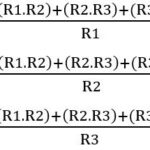What should be the 802.11n mode?
Let me guide you through this in a way that helps you choose the best mode for 802.11n based on your usage. As you and I explore wireless network settings, it’s important to understand how the mode you select can impact both speed and compatibility.
The 802.11n mode is part of the Wi-Fi standard that supports higher throughput, greater range, and better efficiency compared to older modes like 802.11a/b/g. When you’re configuring your router or device, you might come across different mode settings such as:
- 802.11b/g/n mixed mode
- 802.11n only
- 802.11a/n
Now, let’s say you want faster speeds and your devices all support 802.11n. In this case, I suggest selecting 802.11n only mode. This forces the router to use only the N standard, allowing for better performance and less interference from slower legacy protocols.
However, if you or someone else in the network is using older devices that only support 802.11b or 802.11g, then go for mixed mode (b/g/n). This ensures compatibility but may slightly reduce performance for newer devices, since the router has to manage older protocols too.
Here’s a quick comparison to help you decide:
| Mode | Use Case | Pros | Cons |
|---|---|---|---|
| 802.11n only | All devices support N | High speed, efficient | Old devices won’t connect |
| 802.11b/g/n mixed | Mixed device support | Broad compatibility | May lower overall performance |
Also, if you’re configuring this for a dual-band router, make sure you’re also taking advantage of the 5 GHz band where possible, since it offers less interference and higher throughput compared to 2.4 GHz, which is more crowded.
As we explored in previous discussions about wireless interference and signal strength, making the right setting choice in your wireless configuration helps you get the most stable and efficient experience. So, choose the mode based on the devices in your environment—if all your devices are modern, stick with 802.11n only for optimal performance.


